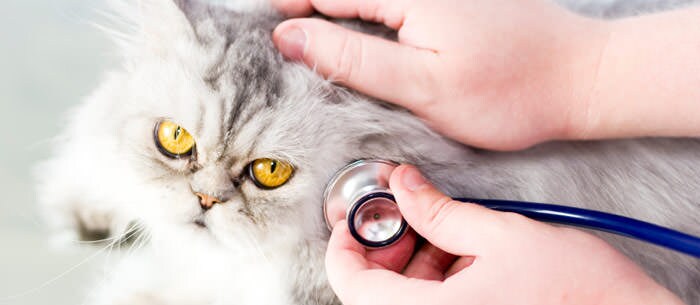If you’ve noticed that your cat has been blinking and squinting more than normal, it could be that they have contracted the Feline Ocular Herpes Virus or FHV-1. If you are wondering what this might mean for your cat, take a look below at some of our experts’ information and advice:
What is an FHV-1 eye infection?
Feline ocular herpes virus, or FHV-1, is a very common virus in cats. While it is thought that more than 90 percent of cats harbour the virus, only a small percentage will actually show symptoms. These cats are usually immune-suppressed from stress or disease, or they may harbour a more violent strain of the virus.
FHV-1 is easily spread to other cats through nasal and ocular secretions, particularly during an outbreak. This explains why there are higher instances of outbreak in catteries where there is a lot of cat-to-cat contact. However, just as all other common infectious ocular surface diseases, it cannot be passed to other species — including humans.
There is no evidence for a breed disposition to cats with FHV-1. There is also no cure for herpes virus. While it can be driven into remission, it can never be cured.
What are the symptoms of eye herpes in cats?
Clinical signs are variable and may be mild to severe. Mild squinting, runny eyes, and conjunctivitis are mild generalised ocular signs consistent with FHV-1. More severe signs may involve changes in the cornea such as cloudiness or redness. In severe cases there may be vision impairment, a marked increase in tearing, and squinting. Ocular herpes can be very painful and if untreated could lead to vision loss or loss of the eye in the most severe infections. There may also be upper respiratory signs, such as a runny nose, sneezing, or nasal surface ulceration. In severe cases, herpes infections may also acquire a bacterial or dry eye component complicating the situation and causing more damage to the ocular surface.
However, bear in mind that sometimes the symptoms are very similar to those resulting from an allergy or bacterial infection – in which case your cat will need different treatment. Diagnostic tests are difficult at best to determine if a cat has FHV-1. A fresh and properly prepared sample of the cat’s conjunctiva or corneal cells may yield evidence of virus based on a molecular screening test called a PCR (polymerase chain reaction). Viral cultures are rarely done and not necessarily practical in a clinical setting. Most cats are treated based on the history and clinical signs. Often if a superficial linear, or dendritic (branching or lightning bolt shaped), corneal ulcer is noted on the clinical examination, there is a high likelihood of FHV-1 being present. Ulcers on the cornea if present are not exclusively linear and may be geographic, covering a variable area of the corneal surface.
Treatment options
Treatment is usually a combination of medicine to address the virus specifically, medicine to provide lubrication and antibacterial protection, and in some cases, medicine to manage the pain of the outbreak. Usually there is a combination of oral and topical medication. Surgery to repair a damaged eye is indicated only in the most severe cases. Treatment is often long-term, and for most cats is recommended up to two weeks beyond resolution of clinical signs. When to stop or change treatment should be left up to the vet managing the disease.
While applying your cat’s medication, it is important not to let any other bacteria contaminate the process, so be careful not to touch the tip of the bottle, the ocular surface or your cat’s eyelids. To apply eye drops, point the cat’s nose to the ceiling and then gently spread their eyelids. Ointments can be best applied between the inside of the lower eyelid and the ocular surface or on the top of the eye after manually raising the upper eyelid. If you are unsure of how to apply the eye drops, ask your vet to give you a demonstration.
Ensuring that your cat is in good health, stress-free and getting the right nutrition are all ways which will help reduce the likelihood of FHV-1 outbreaks. Additionally, make sure that they stay up to date with any ongoing medication your vet may have prescribed.
To learn more about the FHV-1 condition and whether your cat is at risk, speak to your vet. Remember, that even though the condition is life-long, it is easily manageable. With the right care, you can prevent outbreaks and make your cat as comfortable as possible.
